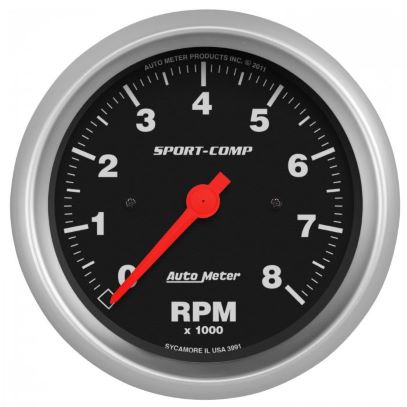Unlocking the Secrets of Tachometers: Everything You Need to Learn About This Vital Tool in Your Lorry
Recognizing the ins and outs of tachometers can give beneficial understandings into your car's efficiency and upkeep demands. From determining engine speed to figuring out the data it offers, tachometers work as a vital tool for vehicle proprietors and fanatics alike. By unwinding the secrets behind this essential instrument, you can unlock a wealth of details that can boost your driving experience and make sure the longevity of your vehicle.
Relevance of Tachometers
The relevance of tachometers hinges on their ability to supply critical real-time information about an engine's rotational rate, permitting precise surveillance and maintenance of equipment. By determining the changes per minute (RPM) of an engine's crankshaft, tachometers offer useful understandings into the engine's performance - tachometer. This information is important for ensuring that the engine runs within its optimal variety, avoiding prospective damages from over-revving or underperforming
Tachometers play an important duty in assisting operators and professionals discover any kind of anomalies in the engine's rate, which could suggest concerns such as fuel inadequacy, mechanical problems, or extreme pressure on the engine. By quickly determining these concerns through tachometer analyses, upkeep can be carried out proactively, stopping pricey repair work and downtime in the lengthy run.
Moreover, tachometers are especially critical in high-performance vehicles and machinery, where exact control over engine rate is essential for optimal operation. Racing autos, airplane, and industrial equipment depend on tachometers to provide peak efficiency while keeping safety standards. Essentially, tachometers are not just tools for measuring speed however indispensable devices for making sure the smooth and reliable procedure of engines throughout different applications.
Exactly How Tachometers Procedure Engine Rate
Making use of sensors that spot the frequency of electric pulses created by the engine's ignition system, tachometers properly determine the rotational speed of an engine. By keeping track of the price at which these pulses are gotten, tachometers offer real-time feedback on just how quick the engine's crankshaft is rotating per min, typically described as transformations per min (RPM)
The tachometer's sensor, frequently attached to the engine's ignition coil or stimulate plug wires, gets the electrical signals generated each time a cylinder fires. These signals are after that exchanged RPM analyses displayed on the gauge or instrument collection within the driver's sight. Tachometers can be analog or digital, with modern-day cars generally featuring electronic screens for specific and instant RPM analyses.
This information is crucial for chauffeurs to recognize the engine's efficiency, protect against over-revving, optimize equipment shifting, and make certain efficient gas consumption. By accurately gauging engine speed, tachometers play a vital function in aiding vehicle drivers run click over here now their lorries safely and successfully.
Interpreting Tachometer Analyses
Having a clear understanding of how tachometers gauge engine rate sets the foundation for properly analyzing the RPM analyses displayed. Interpreting tachometer analyses is vital for ideal vehicle performance and engine health. When the engine is idling, the tachometer needle typically relaxes around 600-1000 RPM, depending on the automobile.


Tips for Utilizing Tachometers Effectively
To improve driving efficiency and maximize engine performance, what trick methods can be carried out for efficiently making use of tachometers? Tachometers are important why not look here devices that supply real-time feedback on engine rate, enabling motorists to make informed decisions for far better performance - tachometer. Below are some suggestions for making use of tachometers effectively:
Comprehending Optimum RPM Array: Familiarize yourself with the ideal RPM (Changes Per Min) variety for your lorry. Keeping the engine within this variety can boost gas efficiency and prolong the engine's life expectancy.
Changing Gears at the Correct Time: Make use of the tachometer to establish the very best time to move gears. Upshifting as well very early or far too late can cause decreased efficiency and performance. Objective to move gears when the RPM reaches the ideal range for the next have a peek here gear.
Checking Engine Anxiety: High RPMs for long term durations can strain the engine. Maintain an eye on the tachometer to stop over-revving, particularly during velocity or when bring heavy lots.
Tachometers and Automobile Upkeep
When considering lorry maintenance, tachometers play a crucial duty in keeping track of engine efficiency and finding potential problems. Tachometers provide crucial data on engine rate, allowing vehicle drivers and auto mechanics to ensure that the engine is running within the recommended RPM variety.
Along with finding potential problems, tachometers can additionally help in maximizing fuel effectiveness. By maintaining the engine speed within the ideal array, chauffeurs can boost their gas mileage and minimize fuel consumption. This not only profits the motorist's wallet yet additionally adds to ecological conservation by lowering damaging exhausts.
Conclusion

Comments on “Specialist Tips for Maintaining and Calibrating Your Tachometer”